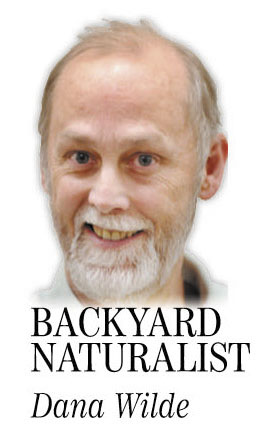Among the piles and beds of snow I had to move last week, my mind was wandering while I shoveled and took increasingly frequent breaks to observe the results. For some reason, the snow was fascinating me.
It was blue.
Now, I’ve noticed this before, of course. In between the flakes, so to speak, new snow glows faintly azure. Looking directly at it, you almost can’t see it. Like the zodiacal light, it’s more clearly viewed almost remotely in your peripheral vision.
In the snowbank I was building beside the steps, this blueness was unfolding out of the whole pile in the distant glitter of the low, bright January sun.
You might think this skylike radiance results from the same process that produces the blue sky. In the sky, sunlight bounces off molecules and particles in the air and scatters. Since blue light scatters more than red light, the sky looks blue, except directly next to the sun. But in a snowbank, the sunlight is bouncing off the surfaces of snowflake crystals, and so most of the light is scattering more or less evenly and striking your eye as snow white. But ice crystals absorb a certain amount of red light, so there’s a bit more blue light angling around, resulting in that azure tinge.
So I was wrong about what process makes snow blue. But then my errant mind, which every January finds the effort to tap into the overwintering processes of consciousness a little more energy-intensive, fixated on what was under the pile.
Every summer a tangle of wild madder grows beside the steps. Its stalks reach up with circlets of eight little leaves out of a sprawling base. Its tiny white flowers spread out in galactic sprays. Right there in front of me, underneath 3 feet of sky-blue snow in 4-degree January cold, was the wild madder invisibly waiting for spring.
Wild madder is a bedstraw and an annual, meaning it regenerates itself from seeds every May. The seed will germinate when three elements — water, oxygen and heat — stir the tiny plant parts inside. Then they’ll unfold into light, which is the fourth element necessary to grow. All seeds, whether they’re bedstraws, hemlocks or grasses, operate the same way.
In one theory of how the physical world works, processes like this are described as being enfolded in the matter. Germination is an order enfolded in the seed. In the right conditions, that order unfolds into a plant. In the theory, which was generated by quantum physicist David Bohm, this process is an example of an “implicate order;” the plant itself, which is a very orderly structure of stalks, leaves and flowers despite its wild-looking madderness, is an “explicate order.”
The natural world as we see it is the visible, explicate order of things. The processes that give rise to the natural world are invisible, implicate orders. Within the seed that will become the wild madder plant is the natural order that is common to all plants. Within the blue light that grazes your eye from inside a new snowbank are the quantum properties of electromagnetic energy — an implicate order. Snow crystals themselves grow by the billions according to an implicate order. When the wild madder unfolds this summer, an implicate order inside will convert light into food.
The implicate order is not simply any process you can’t see; it’s an order enfolded into what you can see. “In the implicate order,” Bohm wrote, “the totality of existence is enfolded within each region of space (and time).” The whole universe, in other words, is an unfoldment of implicate order.
Pausing from my snow-shoveling for a few moments in my little region of January cold, I caught a glimpse of blue sky among the ice crystals and saw underneath it to summer, patiently waiting there beside the step to unfold.
“Let us not underrate the value of a fact,” said Thoreau, before anyone had imagined the quantum world; “it will one day flower in a truth.”
Dana Wilde lives in Troy. His book “Summer to Fall” is available from North Country Press www.northcountrypress.com/summer-to-fall.html. You can contact him at naturalist1@dwildepress.net. Backyard Naturalist appears the second and fourth Thursdays each month.
Send questions/comments to the editors.



Comments are no longer available on this story